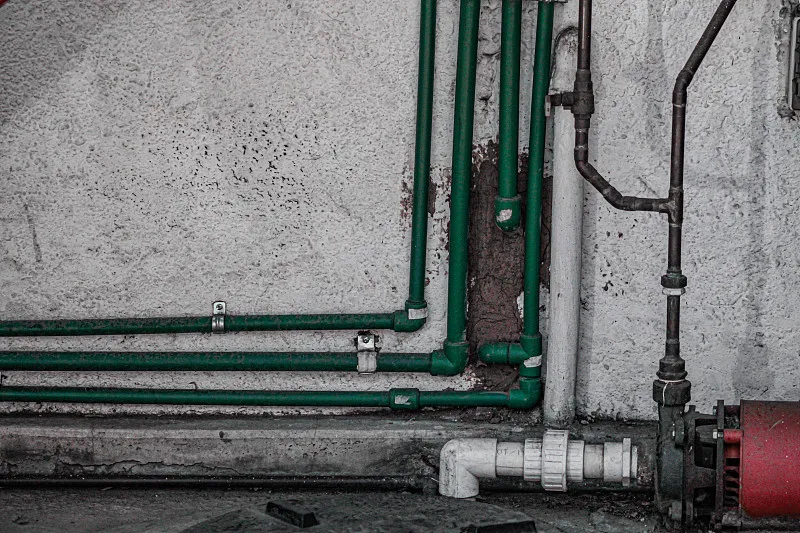Introduction
PPR pipes fittings have become a staple in modern plumbing and water distribution systems due to their durability, efficiency, and eco-friendliness. As the world focuses on sustainable and robust infrastructure, the PPR Pipes Fittings market has gained significant attention. In this article, we’ll dive into the market size of PPR pipe fittings, key growth factors, challenges, and emerging trends for 2024 and beyond.
What Are PPR Pipe Fitting?
PPR Pipes Fittings use polypropylene, a thermoplastic polymer ideal for plumbing systems due to its high resistance to heat, pressure, and corrosion.
These fittings have wide applications, including:
- Hot and Cold Water Systems: PPR pipe fitting can withstand extreme temperatures, making them suitable for both hot and cold water distribution.
- Chemical Transport: PPR’s chemical-resistant properties make it a go-to choice for transporting non-aggressive chemicals.
- Industrial Applications: Many industries rely on PPR fittings for processing lines and other industrial applications.
Key Advantages of PPR Pipe Fitting
PPR pipe fitting stand out due to several advantages that make them a preferred choice for plumbing and industrial applications:
- Durability and Longevity: PPR fittings are known for their long lifespan, often lasting several decades without degradation.
- Heat and Corrosion Resistance: They can handle high temperatures and are resistant to corrosion, which makes them suitable for diverse applications.
- Eco-Friendly and Recyclable Material: PPR is a recyclable material, aligning with the growing trend of sustainable construction.
PPR Pipe Fittings Market Overview
The PPR pipe fitting market has shown considerable growth in recent years, driven by increasing infrastructure development and the need for reliable plumbing solutions. Currently, the market size for PPR fittings is substantial, with forecasts predicting robust growth through 2030. This growth is primarily driven by:
- Rapid Urbanization: Developing regions are seeing a surge in urban development, fueling demand for effective plumbing and piping systems.
- Sustainable Construction Trends: With a shift towards eco-friendly construction, PPR’s recyclable properties make it a preferred material.
- Infrastructure Investments: Governments around the world are investing in public infrastructure, creating opportunities for PPR pipe fitting in water and gas distribution systems.
Factors Driving Market Growth
- Durable Plumbing Solutions in Construction:The construction industry demands durable, long-lasting plumbing materials.
- PPR pipe fittings provide a solution that meets these needs.
- Awareness of Eco-Friendly Plumbing Options: Sustainability is becoming a core focus for many industries.
- More industries are choosing PPR fittings for their eco-friendly and recyclable nature.
- Expansion of Infrastructure Projects Worldwide: Large-scale projects in Asia-Pacific and the Middle East are using PPR fittings.
- These fittings meet water supply and plumbing needs in these regions.
Challenges in the PPR Pipe Fitting Market
While the PPR Pipes Fittings market has promising growth potential, it also faces several challenges:
- Competition with Alternative Materials: PPR is popular, but PVC and HDPE offer different benefits and are widely used in plumbing.
- High Initial Installation Costs: PPR fittings are cost-effective long-term, but higher installation costs may limit adoption.
- Environmental Regulations: The plastic industry faces scrutiny over environmental impact, and there are increasing calls for stricter regulations, which could impact production and usage.
Regional Market Analysis
- North America: The PPR pipe fitting market in North America is mature, with steady demand from both residential and commercial sectors. Focus on sustainable construction has driven growth.
- Europe: Europe has a well-established infrastructure that heavily incorporates PPR fittings, especially in countries that emphasize green construction standards.
- Asia-Pacific: This region shows the highest growth potential, driven by large infrastructure projects and the region’s rapid urbanization.
- Latin America: There is growing interest in PPR pipe fittings due to water infrastructure projects, particularly in countries like Brazil and Argentina.
Technological Innovations in PPR Pipe Fitting
Innovation in PPR technology is enhancing product performance and market appeal:
- Improved Material Composition: Manufacturers are enhancing PPR material properties to make fittings more resistant to temperature fluctuations and chemical exposure.
- Integration of Smart Plumbing Systems: Smart technology, such as sensors for leak detection, is being integrated into plumbing systems, adding value and increasing demand for high-quality PPR fittings.
Competitive Landscape
The competitive landscape of the PPR pipe fitting market is characterized by a mix of established players and emerging companies. Leading players focus on innovations, partnerships, and mergers to strengthen their market position. Notable companies in the industry include:
- Aquatherm
- Georg Fischer
- Nupi Industrie Italiane
Future Market Outlook
The PPR pipe fitting market will grow as demand for eco-friendly, durable, and efficient plumbing solutions increases.
Technological advancements and new infrastructure projects will drive further adoption of PPR pipe fittings.
The market is projected to expand with a CAGR of 6-8% through 2030, driven by global plumbing needs.

Conclusion
The PPR pipe fittings market will grow significantly, driven by urbanization, technological advancements, and sustainable construction.
PPR pipe fittings offer durability, eco-friendly properties, and versatility, ensuring their importance in plumbing for years.
FAQs
- What are the primary uses of PPR pipe fitting?
PPR pipe fittings are commonly used in hot and cold water systems, industrial processing lines, and chemical transport due to their durability and resistance to heat. - How does the cost of PPR pipe fitting compare to other materials?
While PPR fittings may have higher initial installation costs, their long lifespan and durability make them cost-effective over time. - Is PPR environmentally friendly?
Yes, PPR is recyclable and considered more eco-friendly than many other types of plastic piping materials, making it a sustainable option. - What are the main regions driving the demand for PPR pipe fittings?
Asia-Pacific is the largest growth region due to rapid urbanization, followed by Europe and North America, where sustainable construction is prioritized. - What challenges does the PPR pipe fittings market face?
Challenges include competition from alternative materials, installation costs, and environmental regulations, which require manufacturers to focus on sustainable practices.


















